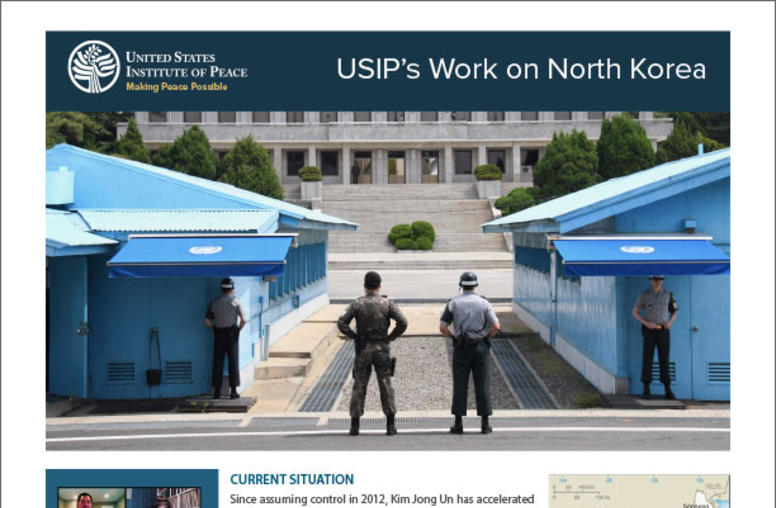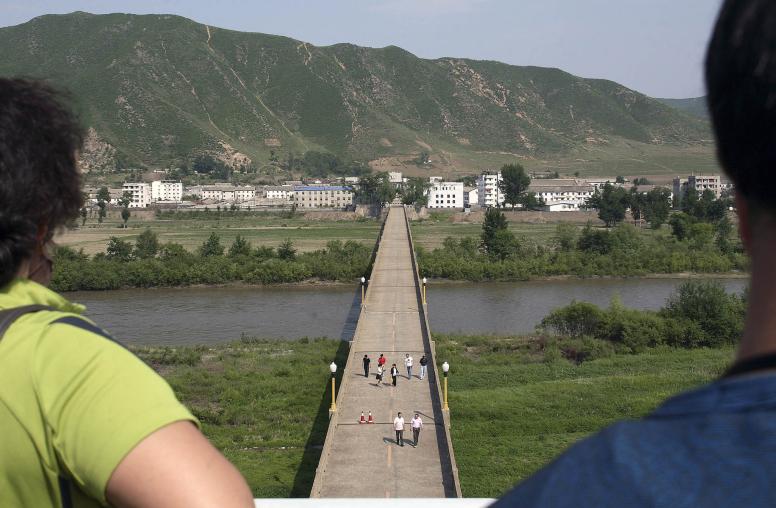The Case for Maximizing Engagement with North Korea
By focusing primarily on deterrence and pressure, the United States has pursued security with one hand tied behind its back.
As the Biden administration’s North Korea policy review nears completion, there is growing worry that it could dig in its heels on previous U.S. efforts to change North Korea’s behavior through isolation and pressure. Early signals indicate the Biden team is prioritizing pressure among many options. Several experts, however, believe this approach will continue to fail because it incorrectly assumes North Korea will yield to coercive tactics and that China will cooperate in this effort.

Instead, the United States needs a more effective strategy for dealing with the reality of an insecure and nuclear-armed North Korea. Maintaining deterrence and preserving denuclearization as a long-term goal are, of course, essential. However, a practical approach to U.S. and regional security should also maximize the opportunities and channels for interacting with the North Korean government and its people. Greater and more meaningful interaction on both governmental and nongovernmental levels can help clarify our respective interests and concerns, reduce miscommunication and miscalculation, build mutual trust, and perhaps even contribute to North Korea becoming a more responsible, stable and integrated member of the international community.
Enhancing Engagement
What would enhanced engagement look like? The first step would be to adopt and signal a comprehensive strategic effort at building new, peaceful U.S.-DPRK relations, which would provide the basis for all-out engagement. Bold, proactive outreach rather than a passive, cautious approach is necessary to pique North Korea’s interest — as its rejection of a recent U.S. offer for talks indicates. Washington could quickly reaffirm the 2018 Singapore Joint Statement, an agreement that Kim Jong Un himself signed and has yet to renounce, and express an interest in declaring an end to the Korean War, which would mute the initial signaling of a pressure-focused approach. Also, offering unilateral conciliatory gestures that do not undermine allied deterrence, such as partial sanctions relief and a moratorium on U.S. strategic asset deployments to the Korean Peninsula, could incentivize North Korea to return to talks and reach an interim deal that freezes its nuclear program — all without coercion. Establishing liaison offices would help sustain diplomatic progress and communications.
An interim deal would not only set the foundation for more comprehensive discussions on peace and denuclearization but could also open the door for expanded security engagement. Beyond the traditional diplomatic and intelligence channels, Washington could offer talks between the U.S. Department of Defense and the Korean People’s Army (KPA). Unlike past military talks at the demilitarized zone, which focused on managing the armistice and are now defunct, defense engagement at senior policy levels could address more strategic goals such as strengthening military ties, understanding KPA thinking, building its buy-in for diplomacy, exploring mutual force reductions and decreasing chances for miscalculation and conflict.
On the nongovernmental side, humanitarian and people-to-people engagements offer low-hanging fruit and should be reinvigorated immediately. The restrictions on travel to North Korea can be lifted by the secretary of state, which — once North Korea reopens from its COVID lockdown — would open up greater humanitarian access for private organizations to deliver aid during a critical moment of mounting needs in the country. Lifting these restrictions could also facilitate potential reunions of Korean Americans with separated family members in North Korea.
Likewise, many family members of the approximately 5,300 missing U.S. soldiers in North Korea eagerly seek the resumption of remains recovery operations. Recently introduced legislation would address all of these issues as well as help expedite aid to North Korea by minimizing roadblocks created by sanctions regulations. Additionally, despite the limited number of North Koreans who visit the United States, easing restrictions on North Korean travel and visas would open up the potential for engagement through established governmental mechanisms such as the Department of State’s International Visitor Leadership Program as well as through nongovernmental channels that center on academic, economic, scientific, sport and cultural affairs.
One potential area for greater U.S. engagement is economic cooperation. North Korea is reluctant to pursue radical economic reform but has embraced limited marketization and economic experimentation, including joint ventures and special economic zones like the Kaesong Industrial Complex and the Mt. Kumgang tourism project. Non-U.S. entities, such as the Singapore-based Choson Exchange, have worked to encourage positive change in North Korea by holding workshops on business, law and economic policy for aspiring North Korean entrepreneurs, specifically including women, who tend to be the breadwinners. Greater economic cooperation — ranging from development assistance to technical assistance in international accounting standards to best business practices — can encourage domestic growth and stability, which would help improve the North Korean people’s welfare and facilitate the country’s integration into the global economy.
Energy and environment offer another space for engagement. North Korea faces chronic energy scarcity due to economic underdevelopment and sanctions on oil imports. As a result, the country relies on “dirtier” sources like coal and synthetic natural gas for fuel and electrical power, while seeking greater advances in wind, hydroelectric and nuclear power. The government is also intensifying afforestation, land management and disaster risk reduction efforts to mitigate the impact of severe climate-related events like flooding, droughts and typhoons. In addition, North Korea’s mostly mountainous terrain contains vast mineral resources, including potentially the world’s largest reserves of rare earth elements, which have useful applications in high-technology goods such as smartphones, electronic displays and electric vehicles. U.S.-DPRK cooperation on many of these areas could be mutually beneficial but would first need to overcome relevant sanctions.
A Role for the U.N.
The U.N. is also a largely untapped resource for building bridges. U.S. engagement on North Korea at the U.N. tends to be almost exclusively conducted at the Security Council in reaction to nuclear or missile tests or at the Human Rights Council for censuring the country on human rights grounds. However, as a peacebuilding organization, the U.N. has the technical and institutional capacity to conduct exchanges and trainings and provide backchannel support during negotiations. The U.N. Secretariat is comprised of skilled and knowledgeable diplomats who typically have longer tenure than their State Department and other national counterparts and, thus, represent a level of trustworthy institutional knowledge that could help bridge gaps between personnel and administrations.
It is important to emphasize that different forms of engagement can have different goals and be pursued with different timeframes. Security engagement that leads to, for example, a prompt freeze on North Korea’s nuclear and missile activities and U.S. strategic asset deployments to the peninsula would provide immediate and broad benefits for both sides and potentially unlock further negotiations. On the other hand, the impact of people-to-people engagement is felt more at the individual level, but with large-scale implications and the potential to grow over time. Humanitarian assistance, in particular, can bridge these levels of engagement by addressing individual needs and building a solid foundation for geopolitical discussions. Ultimately, recognizing that peace is a process, all engagement should work collectively and cumulatively to soften mutual threat perceptions, build habits of trust and collaboration and reinforce risk-taking toward peaceful coexistence.
Daniel Jasper is the Asia public education and advocacy coordinator for the American Friends Service Committee.
This is an adapted excerpt from an article originally published by 38 North.



